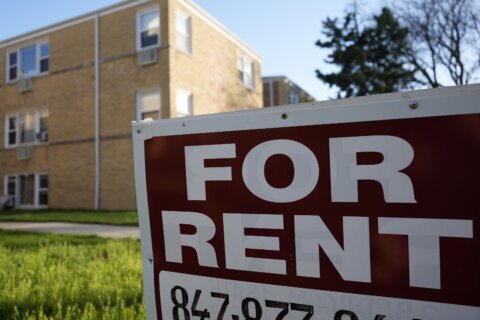Retirement overseas typically comes with the challenge and expense of converting your money. And currencies can be fickle. Exchange rates might swing wildly following world events. It can be difficult to pay your bills when your retirement savings is in U.S. dollars, but it has a different value each time you convert it to another currency.
For example, the U.S. dollar weakened significantly as a result of subprime loans, and world currencies experienced the aftershock. In Uruguay, expats received less than 20 pesos per U.S. dollar after the financial crisis, down from the 34 they had been getting only four years earlier. That’s a big change for anyone whose income is in U.S. dollars. As a result of exchange rates alone, living costs for expats in Uruguay significantly increased. Since that time, things have turned around. In 2016, the U.S. dollar strengthened to the point where it fetched about 31 pesos.
[See: 10 Places to Retire Overseas in 2017.]
When living, retiring or buying property abroad, you need to understand and accept the risks and rewards of dealing in a foreign currency. You can avoid currency risk by living in a place that uses U.S. dollars or a currency that is pegged to the U.S. dollar. Here’s a look at three ways to avoid currency fluctuations when retiring overseas:
1. Restrict your activities overseas to countries that use the U.S. dollar as their currency. The most popular of these countries include Ecuador, El Salvador and Panama. This category is the most secure way to avoid currency risk. All of your local expenses are in dollars.
2. Restrict your activities overseas to countries whose currency is pegged to the U.S. dollar. Places that do this include the Bahamas, Bermuda, Belize and Hong Kong. This is almost as safe as living in a country that uses dollars, because your expenses are stable in dollar terms. The risk here is that a country can un-peg its currency from the dollar, which would put you at risk. It doesn’t happen often, but it happened in Argentina in 2001. When the peso was un-pegged from the dollar it immediately lost 75 percent of its value.
3. You could also retire in a country where real estate trades in U.S. dollars, even though they have their own currency. Examples include Uruguay, Nicaragua, Costa Rica, Peru, sometimes Mexico and many others. The advantage of buying in these markets is that it stabilizes your largest expense (your housing) in dollar terms. No matter what happens to the rate of exchange between the U.S. dollar and the local currency, your property’s value is not directly affected. The disadvantage of these hybrid markets is that all of your other living expenses are in the local currency, which could fluctuate dramatically.
[See: The Top Travel Destinations for Retirees.]
There are several retirement spots where Americans don’t have to worry about fluctuating exchange rates. Here are four places you can minimize your currency risk by retiring in a dollar-based country:
El Salvador. El Salvador uses the U.S. dollar as its currency and has several potential retirement spots. Stick with the coast if you’re interested in rental income and a liquid market at resale time. Costa del Sol is a key place to retire due to its proximity to San Salvador (the capital), short distance to the airport and potential for an easy resale when you want to move on. This area is convenient for a second home owner.
If you’d like to go farther afield, consider the stretch of coast west of Costa del Sol, between La Libertad and Los Cóbanos, along Highway 2. This is more unspoiled and beautiful, but less accessible to the capital.
Panama. Panama officially uses the balboa as its currency. It’s pegged at a one-to-one rate with the U.S. dollar. Panama doesn’t print its own paper money. Instead, it imports Greenbacks. So, your retirement savings has the same spending power.
Take a look at the beach properties around Coronado, Chame and Gorgona. This stretch is referred to as the ” Panama City Beaches” area due to its proximity to Panama City and the airport. The most populous area is between Chame and Río Hato, where you will find a lot of rentals.
[See: 10 Retirement Hot Spots in the U.S.]
Belize. Belize uses Belizean dollars, which are pegged to the U.S. dollar at a rate of two Belizean dollars for each U.S. dollar. This fixed rate of exchange has endured since 1978. Ambergris Caye gets most of Belize’s tourism visits and expat traffic. Retirees can buy or rent within walking distance of San Pedro Town, with its restaurants, shops and airport.
Ecuador. Ecuador uses the U.S. dollar as its currency. Cuenca is home to one of the largest expat communities in the Americas, with thousands of North Americans in residence. This beautiful city has cobblestone streets, 17th century architecture and a traditional Spanish colonial feel. It’s also the cultural capital of Ecuador, with a vibrant scene for art, literature and music.
The real estate market rose strongly in Cuenca from 2002 through 2012 as expats flocked to the city and Ecuadorians chose Cuenca when returning from working abroad. While the expats are still coming, the flow of returning Ecuadorians has slowed, halting the dramatic price gains. Bargains are emerging. You can buy a one-bedroom apartment just a block off the central square for as little as $70,000. That’s a great price for the location. Plus, that apartment would rent for $550 per month when you’re not there. You probably won’t see a quick capital gain on a property in Cuenca, but it could be a solid investment over the long term.
Kathleen Peddicord is the founder of the Live and Invest Overseas publishing group.
More from U.S. News
10 Tips for Finding a Great Place to Retire
10 Ways to Reduce Your Housing Costs in Retirement
Retire on Your Own Tropical Island Overseas
4 Overseas Retirement Spots That Use the U.S. Dollar originally appeared on usnews.com







